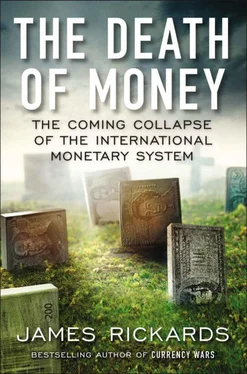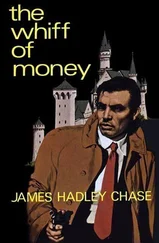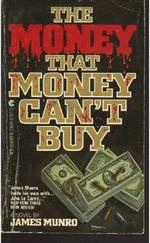The 1960s and 1970s are a good case study in money illusion. From 1961 through 1965, annual U.S. inflation averaged 1.24 percent. In 1965 President Lyndon Johnson began a massive bout of spending and incurred budget deficits with his “guns and butter” policy of an expanded war in Vietnam and Great Society benefits. The Federal Reserve accommodated this spending, and that accommodation continued through President Nixon’s 1972 reelection. Inflation was gradual at first; it climbed to 2.9 percent in 1966 and 3.1 percent in 1967. Then it spun out of control, reaching 5.7 percent in 1970, finally peaking at 13.5 percent in 1980. It was not until 1986 that inflation returned to the 1.9 percent level more typical of the early 1960s.
Two lessons from the 1960s and 1970s are highly pertinent today. The first is that inflation can gain substantial momentum before the general public notices it. It was not until 1974, nine years into an inflationary cycle, that inflation became a potent political issue and prominent public policy concern. This lag in momentum and perception is the essence of money illusion.
Second, once inflation perceptions shift, they are extremely difficult to reset. In the Vietnam era, it took nine years for everyday Americans to focus on inflation, and an additional eleven years to reanchor expectations. Rolling a rock down a hill is much faster than pushing it back up to the top.
More recently, since 2008 the Federal Reserve has printed over $3 trillion of new money, but without stoking much inflation in the United States. Still, the Fed has set an inflation target of at least 2.5 percent, possibly higher, and will not relent in printing money until that target is achieved. The Fed sees inflation as a way to dilute the real value of U.S. debt and avoid the specter of deflation.
Therein lies a major risk. History and behavioral psychology both provide reason to believe that once the inflation goal is achieved and expectations are altered, a feedback loop will emerge in which higher inflation leads to higher inflation expectations, to even higher inflation, and so on. The Fed will not be able to arrest this feedback loop because its dynamic is a function not of monetary policy but of human nature.
As the inflation feedback loop gains energy, a repetition of the late 1970s will be in prospect. Skyrocketing gold prices and a crashing dollar, two sides of the same coin, will happen quickly. The difference between the next episode of runaway inflation and the last is that Russia, China, and the IMF will stand ready with gold and SDRs, not dollars, to provide new reserve assets. When the dollar next falls from the high wire, there will be no net.
There has been no episode of persistent deflation in the United States since the period from 1927 to 1933; as a result, Americans have practically no living memory of deflation. The United States would have experienced severe deflation from 2009 to 2013 but for massive money printing by the Federal Reserve. The U.S. economy’s prevailing deflationary drift has not disappeared. It has only been papered over.
Deflation is the Federal Reserve’s worst nightmare for many reasons. Real gains from deflation cannot easily be taxed. If a school administrator earns $100,000 per year, prices are constant, and she receives a 5 percent raise, her real pretax standard of living has increased $5,000, but the government taxes the increase, leaving less for the individual. But if her earnings are held constant, and prices drop 5 percent, she has the same $5,000 increase in her standard of living, but the government cannot tax the gain because it comes in the form of lower prices rather than higher wages.
Deflation increases the real value of government debt, making it harder to repay. If deflation is not reversed, there will be an outright default on the national debt, rather than the less traumatic outcome of default-by-inflation. Deflation slows nominal GDP growth, while nominal debt rises every year due to budget deficits. This tends to increase the debt-to-GDP ratio, placing the United States on the same path as Greece and making a sovereign debt crisis more likely.
Deflation also increases the real value of private debt, creating a wave of defaults and bankruptcies. These losses then fall on the banks, causing a banking crisis. Since the primary mandate of the Federal Reserve is to prop up the banking system, deflation must be avoided because it induces bad debts that threaten bank solvency.
Finally, deflation feeds on itself and is nearly impossible for the Fed to reverse. The Federal Reserve is confident about its ability to control inflation, although the lessons of the 1970s show that extreme measures may be required. The Fed has no illusions about the difficulty of ending deflation. When cash becomes more valuable by the day, deflation’s defining feature, people and businesses hoard it and do not spend or invest. This hoarding crushes aggregate demand and causes GDP to plunge. This is why the Fed has printed over $3 trillion of new money since 2008—to bar deflation from starting in the first place. The most likely path of Federal Reserve policy in the years ahead is the continuation of massive money printing to fend off deflation. The operative assumption at the Fed is that any inflationary consequences can be dealt with in due course.
In continuing to print money to subdue deflation, the Fed may reach the political limits of printing, perhaps when its balance sheet passes $5 trillion, or when it is rendered insolvent on a mark-to-market basis. At that point, the Fed governors may choose to take their chances with deflation. In this dance-with-the-Devil scenario, the Fed would rely on fiscal policy to keep aggregate demand afloat. Or deflation may prevail despite money printing. This can occur when the Fed throws money from helicopters, but citizens leave it on the ground because picking it up entails debt. In either scenario, the United States would suddenly be back to 1930 facing outright deflation.
In such a circumstance, the only way to break deflation is for the United States to declare by executive order that gold’s price is, say, $7,000 per ounce, possibly higher. The Federal Reserve could make this price stick by conducting open-market operations on behalf of the Treasury using the gold in Fort Knox. The Fed would be a gold buyer at $6,900 per ounce and a seller at $7,100 per ounce in order to maintain a $7,000-per-ounce price. The purpose would not be to enrich gold holders but to reset general price levels.
Such moves may seem unlikely, but they would be effective. Since nothing moves in isolation, this kind of dollar devaluation against gold would quickly be reflected in higher dollar prices for everything else. The world of $7,000 gold is also the world of $400-per-barrel oil and $100-per-ounce silver. Deflation’s back can be broken when the dollar is devalued against gold, as occurred in 1933 when the United States revalued gold from $20.67 per ounce to $35.00 per ounce, a 41 percent dollar devaluation. If the United States faces severe deflation again, the antidote of dollar devaluation against gold will be the same, because there is no other solution when printing money fails.
The prospect of a market collapse is a function of systemic risk independent of fundamental economic policy. The risk of market collapse is amplified by regulatory incompetence and banker greed. Complexity theory is the proper framework for analyzing this risk.
The starting place in this analysis is the recognition that capital markets exhibit all four of complex systems’ defining qualities: diversity of agents, connectedness, interdependence, and adaptive behavior. Concluding that capital markets are complex systems has profound implications for regulation and risk management. The first implication is that the proper measurement of risk is the gross notional value of derivatives, not the net amount. The gross size of all bank derivatives positions now exceeds $650 trillion, more than nine times global GDP.
Читать дальше











